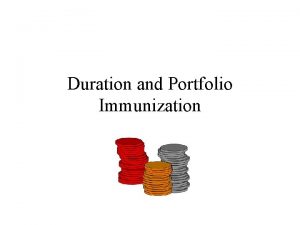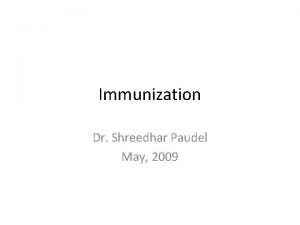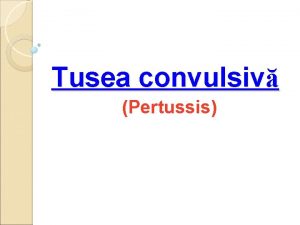Controlling Pertussis Immunization Prevaccine era 1940 1945 1976








- Slides: 8

Controlling Pertussis: Immunization Prevaccine era: 1940 -1945: 1976: 2004: pertussis is universal meaning almost EVERY children gets it 147, 000 cases in US 1, 010 cases reported 25, 827 cases reported • DTa. P: Diphtheria, Tetanus, Pertussis - Designed to be given in 5 doses - 2, 6, 8 months of age - 15 -18 months of age - 4 -6 years of age • Tdap: Vaccine for 7 -64 years of age, recommended every 10 years - Whoever did not complete full dosage of DTa. P - Pregnant women who never had Tdap before • 2008: WHO estimates 82% of all infants worldwide received DTa. P averting 687, 000 deaths

Worldwide Burden of Pertussis DALY Rates from Pertussis (per 100, 000), WHO 2002 • • • Age standardized disability-adjusted life years (DALY): measures burden of disease expressed in number of life years lost due to disease Heaviest burden on Africa and other developing nations Immunization coverage

US Distribution of Pertussis, 2001 • • Pertussis is a major concern for California even more so in recent years In 2010: 27, 750 were reported in the US 9, 225 (33%) of those cases from California

Controlling Pertussis: Continued • Treatment: Antibiotics - shorten course of disease - reduce spread of infection to contacts - Erythromycin is currently first line treatment - Treatment after three weeks of illness is unlikely to help because the bacteria are gone from your body, but symptoms will still persist • AB 354: signed by Governor Schwarzenegger of California - Beginning July 1, 2011 - all students grades 7 -12 require proof of Tdap immunization

Population Vulnerable to Pertussis • • • Any age group not vaccinated, or finished the DTa. P series Those whose immunity to the disease has diminished (every 10 years) Pregnant women recommended to get vaccinated Tdap in 2 nd or 3 rd trimester to pass antibodies to newborns until they’re old enough to get fully vaccinated • • • High mortality rate in infants age 6 months or less 2000 -2008 in US: 181 deaths due to Pertussis, 166 from age 6 months or less Worldwide: 30 -50 million cases per year with 300, 000 deaths

Environmental Factors • Bordetella pertussis cannot survive in the environment and humans are its only hosts -> areas with crowded living conditions are at higher risk of exposure • With developing nations, immunization coverage is the main issue. • Greater risk in lower socio-economic class

Temporal Variation • • Periodic epidemic that cycles with a peak every 3 -5 years, most recent in 2005 Causes for the variation: - genetic changes in Bordetella pertussis - decreased potency of vaccines - community awareness leading to vaccination gaps

• Which Pertussis vaccine is used for persons 7 years or older? • Answer: Tdap















